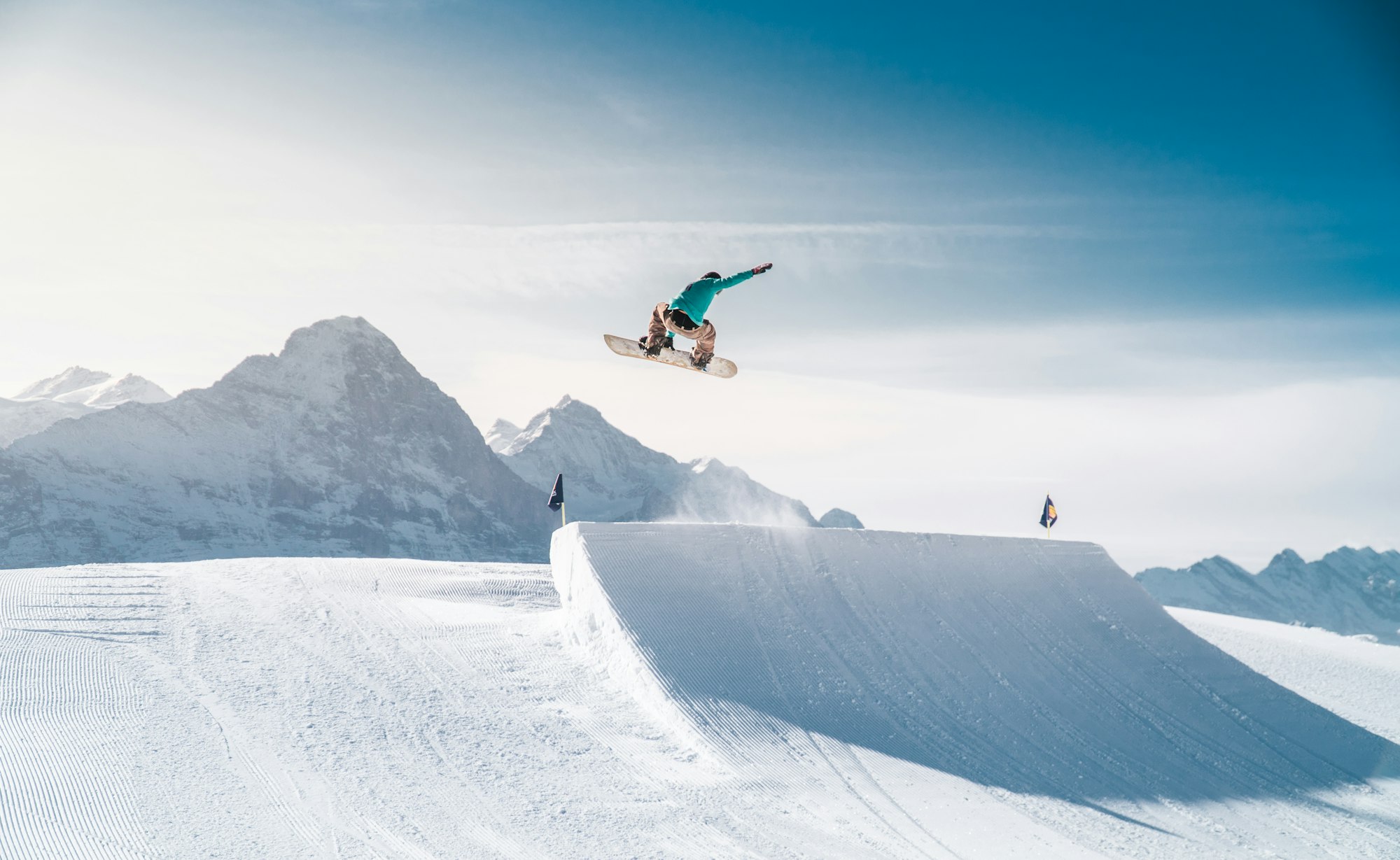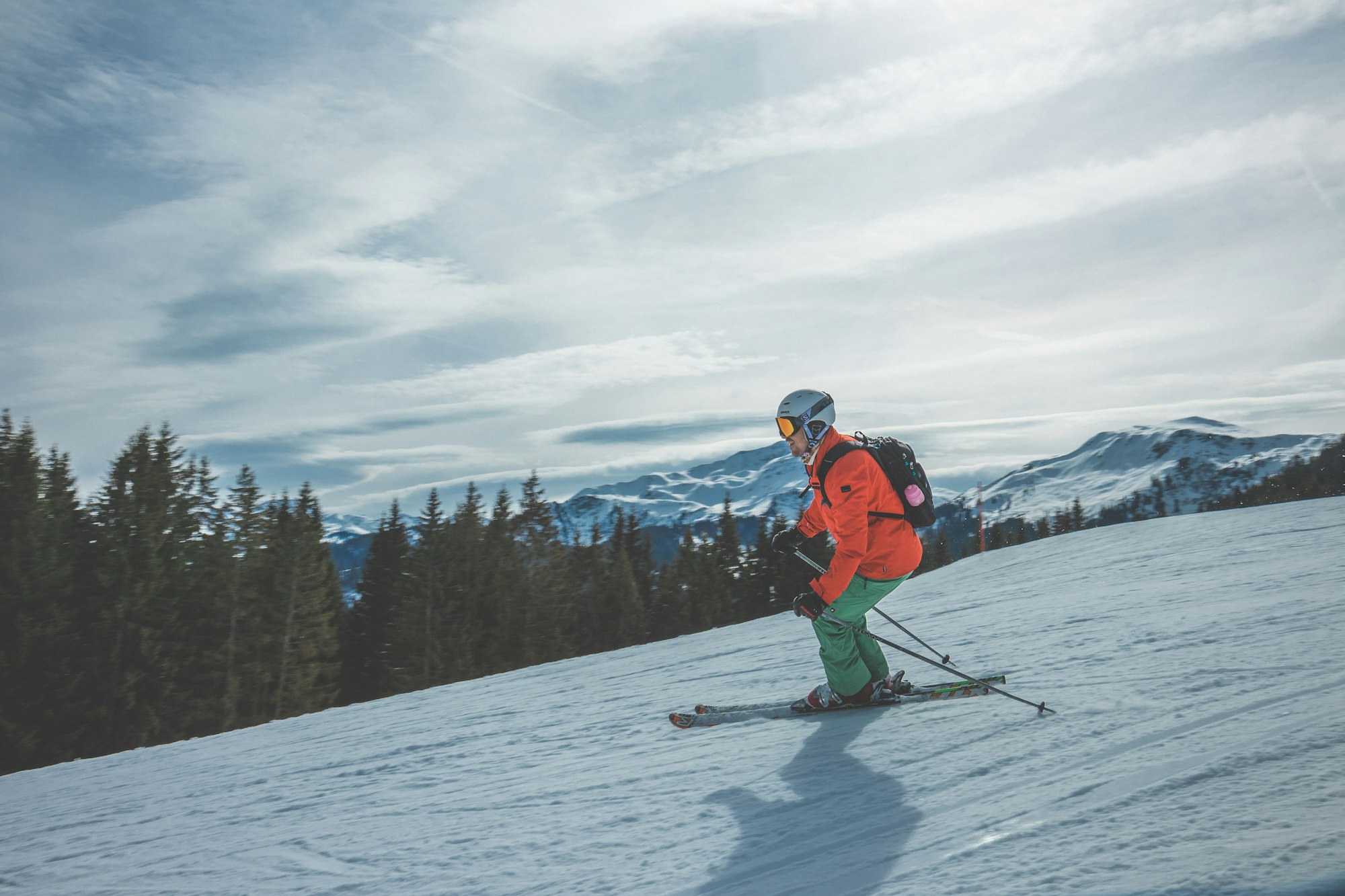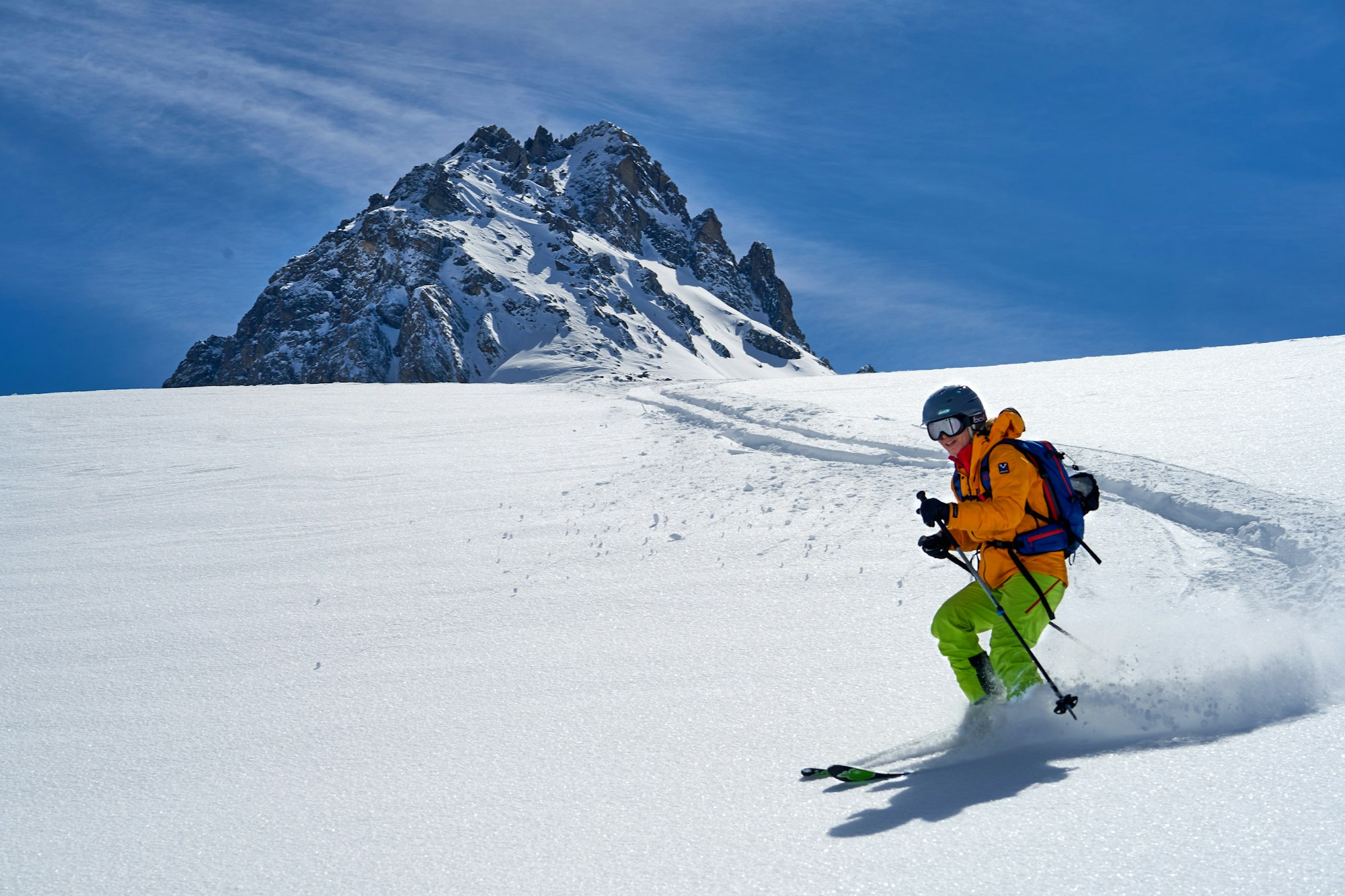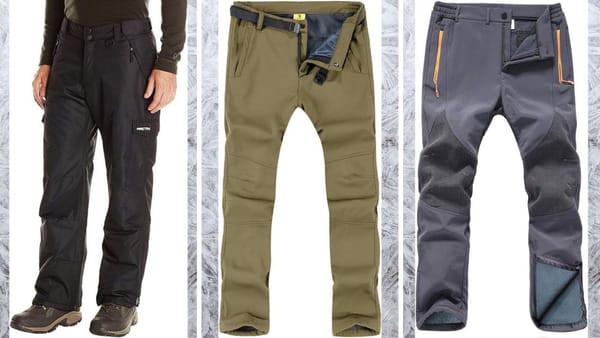When it comes to choosing between skiing and snowboarding, many beginners are faced with the question: "Is skiing or snowboarding easier?"
This article aims to provide a detailed comparison of both snow sports to help you decide which might be the right choice for you.
Key Takeaways:
- Skiing may be easier to learn initially, but snowboarding might be easier to master at an advanced level.
- The type of equipment and lifts used can affect the difficulty level for beginners in both sports.
- Personal preference and physical fitness play significant roles in determining which sport is easier for an individual.
The Beginner Stage: Skiing vs Snowboarding
When you're at the beginner stage, the learning curves for skiing and snowboarding are quite different. For many, skiing is generally easy to pick up on the first day. With your feet separated and facing forward, the stance feels more natural.
The basic motion of skiing, often referred to as "french fries" for keeping the skis parallel, is something most people can grasp quickly.
On the other hand, beginner snowboarders spend more time falling as they learn to balance on a single board, which can feel unnatural at first.

Equipment Differences: Boots and Boards
The equipment you use for skiing and snowboarding is vastly different and can affect difficulty. Ski boots are rigid and can be challenging to walk in, but they provide good support when locked into skis.
Snowboard boots are softer and generally more comfortable, but having both feet attached to a single board means snowboarders need to learn how to maneuver their bodies in a way that can initially be more difficult.
Lifts: Skiing vs Snowboarding: A Matter of Convenience(ski lifts vs drag lifts)
When it comes to ski lifts, beginners might find that skiing holds an advantage. Skiers face forward and have their feet separated, which makes getting on and off lifts skiing, including bubble lifts and button lifts, generally easier.
Snowboarders, with their feet attached to one board, often find drag lifts and lifts skiing more challenging moving off at the top.
Injuries Skiing vs Snowboarding: What to Expect
Injuries are an unfortunate reality in any sport, and both skiing and snowboarding have their risks. Most common injuries in skiing involve the knees due to the twisting motions while snowboarding wins in terms of ankle injuries and wrist sprains because of the falls that beginner snowboarders often experience.
It's essential to stay aware of these risks and take precautions to avoid developing bad habits that can lead to injuries.

The Role of Personal Preference in Snow Sports Choice
Personal preference is a significant factor when determining which snow sport is easier. Some people may find the idea of having their feet separated on skis to be more intimidating than the concept of a single board.
Others might prefer the feeling of facing forwards with skis rather than the sideways stance of snowboarding. The considerations mentioned all play a part, but ultimately, it's about what feels right for you.
The Significance of Feet Positioning: Skiing vs Snowboarding
When it comes to foot positioning, skiing and snowboarding differ significantly. In skiing, your feet point forward, parallel to each other, allowing for independent movement.
This can be advantageous when navigating through uneven terrain or making quick, precise turns to adjust to the slope ahead.
The ability to move each foot separately also means that beginners might find it easier to regain balance after a minor stumble, as they can adjust each ski independently to correct their stance.
Conversely, snowboarding requires your feet to be fastened to the same board, typically at an angle, which means they move in unison. This can make controlling your direction and balance a unique challenge, especially for beginners.
A snowboarder must learn to shift their weight and pivot their entire body to steer, which can be less intuitive than the independent leg movements in skiing.
However, once mastered, many find that snowboarding allows for a smoother ride down the slopes, as both feet work in the same way to carve turns and navigate.

The Synchronization of Movement: Coordinating Feet Simultaneously in Skiing and Snowboarding
When it comes to coordinating your feet simultaneously, skiing and snowboarding present unique challenges. In skiing, both feet are strapped into separate skis, requiring simultaneous but independent control.
This can be daunting for beginners who must learn to synchronize their leg movements to navigate turns and maintain balance. The ability to move both feet in harmony is crucial, especially when tackling parallel turns or carving down the slopes.
The skier must develop a sense of rhythm and coordination, ensuring that both skis are angled correctly and applying pressure evenly to avoid crossing skis, which can lead to falls.
Conversely, snowboarding involves both feet being attached to a single board, demanding a different kind of simultaneous coordination. Snowboarders must learn to distribute their weight across both feet while also using their body to steer.
This can be initially more challenging since it requires a strong sense of balance and the ability to control the board with both feet at once.
However, once mastered, the feeling of gliding down a slope with both feet in sync on a snowboard can be exhilarating. The key is to practice consistently, allowing muscle memory to develop for those precise, simultaneous movements.
The Role of Feet Positioning in Maneuverability: Skiing vs Snowboarding
Feet positioning plays a pivotal role in the maneuverability of both skiers and snowboarders. In skiing, the feet are positioned parallel to each other, and subtle shifts in weight from one ski to the other can result in smooth, graceful turns.
Skiers must learn to pivot their feet simultaneously while maintaining a stable stance, which is essential for executing quick maneuvers and avoiding obstacles.
The ability to adjust the angle and edge of each ski independently, yet in a coordinated fashion, allows for precise control over speed and direction, making it possible to navigate through various terrains and snow conditions.
In snowboarding, the feet are positioned perpendicular to the direction of travel, and maneuverability is achieved by tilting the board's edges. Snowboarders must learn to adjust their feet simultaneously within the bindings to initiate turns.
This involves a combination of leaning, bending knees and rotating the hips, all while keeping the feet aligned with the board. The challenge lies in mastering the timing and degree of these movements to carve effectively.
As snowboarders progress, they often find that the ability to control the board with their feet becomes second nature, allowing for dynamic and fluid riding styles.

The Dynamics of Falling: Skiing vs Snowboarding
Falling is an inevitable part of learning any snow sport, and how you fall can impact your learning curve and injury risk. For skiers, falls can happen when their skis cross, or they lose balance, leading to potentially awkward splits or twists.
However, because skiers face the slope ahead, they generally have a better view of what's coming and can often anticipate and brace for a fall, potentially reducing the severity.
Snowboarders, on the other hand, may find that falls happen differently. Since both feet are attached to the same board, a loss of balance usually means falling sideways, which can be less jarring than the forward or backward tumbles experienced by skiers.
This generally holds for beginners who are still getting the hang of their board. While the learning process might involve more falls for a snowboarder, they often learn to fall in a way that minimizes the risk of serious injury, making the process a bit more forgiving.
Core Strength and Body Control: Skiing's Physical Demands
Skiing requires good core strength and control of your legs and abdominal muscles. Simple crunches and other core exercises can help prepare your body for the demands of skiing.
The ability to control each ski independently can be extremely technical, but it also allows for more precise movements on the slopes.

Snowboarding's Learning Curve: Mastering the Basics
Snowboarding may have a steeper learning curve at the beginner stage, but once the basics are mastered, many find it easier to progress to an advanced level.
The single board and the need to control your body facing sideways can make learning advanced turns difficult, but with practice and perhaps a few lessons from a snowboard instructor, these skills can be acquired.
Terrain and Slope Considerations: Affecting Difficulty
The type of terrain you choose to learn on can greatly affect difficulty. Beginners on both skis and snowboards should start on gentle slopes.
However, snowboarders might find a snowpark easier to navigate once they've got the hang of the basics, as jumps and tricks can be more accessible with a board.
The Impact of Learning Environment and Instruction
A supportive learning environment and quality instruction can make a significant difference in how easy or difficult it is to learn skiing or snowboarding.
A good skier or snowboard instructor can help you avoid developing bad habits and teach you the proper techniques from the start, which can make the learning process smoother.

Advanced Skills: Which is Easier to Master?
As you progress to an advanced level, the debate of skiing vs snowboarding continues.
Some argue that snowboarding becomes easier to master once you've conquered the basics, as the movements become more intuitive. In contrast, skiing can become more complex with the introduction of carving, moguls, and off-piste skiing.
Some Final Thoughts
In conclusion, the question of whether skiing or snowboarding is easier does not have a one-size-fits-all answer. It varies based on individual experiences, preferences, and physical abilities.
Skiing might be easier to learn initially, but snowboarding could be simpler to master at an advanced level. The type of equipment lifts and the potential for injuries also play roles in the perceived difficulty of each sport.
Ultimately, the best approach is to give both a try and see which one aligns with your personal preference and style.

FAQ's
Which is easier for beginners, skiing or snowboarding?
Generally, beginners may find skiing easier to pick up on the first day due to the natural stance and separate leg movements. However, snowboarding might become easier once the basics are mastered.
Are there more injuries in skiing or snowboarding?
Both sports come with injury risks. Skiers often suffer from knee injuries due to the twisting motions, while beginner snowboarders are more prone to ankle injuries and wrist sprains.
Can a good instructor affect how easy it is to learn skiing or snowboarding?
Yes, a good instructor can significantly impact the ease of learning by providing proper technique instruction and helping to prevent the development of bad habits.
Is skiing or snowboarding easier for beginners?
Both skiing and snowboarding have their learning curves, but some beginners find skiing easier to pick up initially. Skiing allows for independent leg movement, which can feel more intuitive for those new to winter sports. However, personal preferences and individual learning styles play a significant role, so it ultimately depends on the individual.
Which is safer for beginners, skiing or snowboarding
In terms of injury risk, studies suggest that beginners might face a higher likelihood of injury when learning to snowboard compared to skiing. Skiers tend to have fewer serious injuries in the early stages. However, proper instruction, safety gear, and adherence to mountain rules are crucial for minimizing risks in either sport.












Member discussion